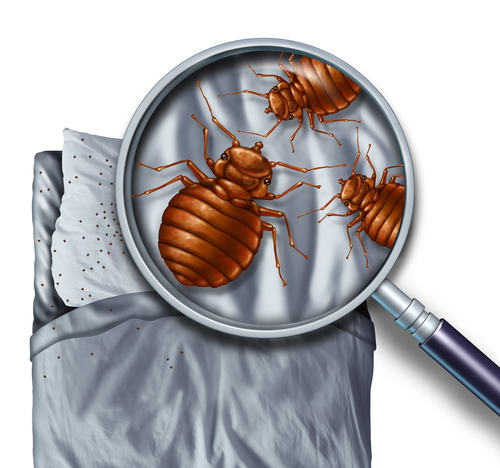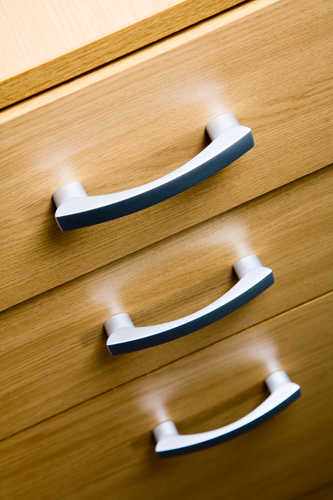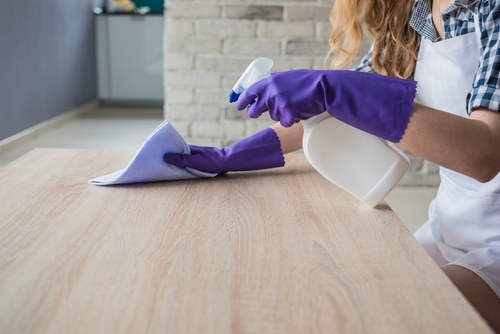It would be unbelievable if someone told you that your cutting board has more germs than your toilet seat, right? Yet, it is absolutely true, at least for most households. According to environmental microbiologists at the University of Arizona, our toilet seat has the least bacteria of all spots inside our homes. In fact, it’s been found that the average cutting boards carry 200X more feces bacteria (fecal coliforms) than the typical commode. Maybe this is because we all sanitize our toilet seats and bathrooms but forget to disinfect germ-infested targets, such as our cutting boards, watchbands, towels, sheets, and washcloths.
Just rinsing your cutting board won’t cut for it. Experts say to mix water with a few drops of bleach and sanitize wooden cutting boards or run them through the dishwasher after each and every use. If you don’t wash them thoroughly, bacteria will find their dream home in the little grooves made by the knives.
Truth be told, the items we often forget to clean properly have made us sick at least once. A recent study has revealed that households can be heavily contaminated with bacteria that could live on dry surfaces for months. Of course, during their “stay” there, they could migrate from a surface to a hand and then to a mouth. Is it by chance that up to 80% of foodborne illnesses are NOT contracted in restaurants as most of us would believe but inside the home?
So, how do you disinfect other frequently neglected targets that have become a germ paradise (or prevent them from becoming a germ hotspot)? Relax. You don’t need to rush and start using bleach on everything in your home. All you need to do is simply include these key items next time you clean up. Below are some of them, as well as ways to sanitize them!
1. Towels
Be it bath towels, hand towels or washcloths, they get bombarded with some of the millions of skin cells we shed every day. So, every time we use towels, we actually lay the table for bacteria that find skin cells a yummy delicacy.
That aside, densely woven materials have lots of crannies and nooks where bacteria could hide in. Now, if they are also damp, then you have created the perfect home for the microscopic, unwanted guests.
Also know that as you reuse the towel, these bacteria transfer back to your skin and may cause skin infections, especially if you have a wound on your skin.
To get rid of them, wash your bath towels once a week. If you are sharing them with others, use fresh ones every day. That includes guests’ towels that should also be thrown in the washing machine after your guest leave. In general, anything that gets soaked should be washed after each use.
2. Sheets
It could be frightening to know that we sleep with the company of microbes that count millions. Unfortunately, it is true. Studies have shown that sheets can contain 0.1 gram of E.coli, salmonella, and feces. And, this is just after a single night’s rest and applies even to the sheets you just got out of the washer.
The secret to remove microbes is to wash your sheets with hot water (germs can survive both cold and warm wash) and change them every week. If you use a dryer, then you can get rid of E.coli by tossing your sheets in it. But, salmonella can survive even that. To rest easy, just use hot water in the wash cycle.
3. Carpets and Rugs
Carpets and rugs can be many thousand times more filthy than our toilet seats. Considering the fact that we shed 1.5 million cells per hour, it makes sense that these skin cells fall on the ground and hit the rugs, feeding germs. Add pollen, food particles, and pet dander to that and you can understand why germs have a feast in your carpets’ fibers. So, if you think you may have E.coli and staphylococcus communities down there, it would probably be correct.
Since the vacuum cleaner’s beater brush don’t usually reach the bottom of the rug or carpet, it’s best to steam-clean your carpets at least once a year or machine-wash your area rugs. You may also use a steam mop or even better call a professional rug cleaner to do the job for you quickly and effortlessly.
4. Remote Control
According to a University of Virginia study, 1 in 2 remote controls tested positive for rhinovirus (viral infectious agents mostly responsible for common cold). If you are also eating something greasy, say popcorn, and cough in your hands before you touch the remote, things are becoming crazy. You are actually providing germs protection by depositing an organism with some oil on the device!
To enjoy your high-definition channels, user a plastic-sleeve protector and make sure you clean it every day with any type of sanitizer you prefer (i.e. a disinfecting wipe). And, next time you go on vacation, add a few ziplock bags in your luggage to slip the hotels’ remotes into!
5. Handles
Just think about it. Everyone In the home touches faucet levers, doorknobs, and appliance handles, making them some of the germiest hot spots in the house. On these items, both viruses and bacteria can live up to 2 days.
The best way to say goodbye to them is to zap them with EPA-registered, surface-disinfecting sprays that are effective against the influenza A virus (some products can also kill H1N1 flu strain). The key to being successful in this quest is to have the area stay wet with the disinfectant for as long as mentioned on the product’s label. And, ensure the surface is first clean of any visible gunk or dirt before you apply the sanitizer. If the area dries too quickly, do another pass. Let it air-dry (evaporation kills germs). Finally, for the items that you can’t wet, such as your remotes, cellphones or light switches, you will need a cotton ball and some rubbing alcohol. Saturate the cotton ball with rubbing alcohol, squeeze excess liquid out, and swab the surfaces, making sure no liquid drips inside them.
6. Gym Bag
Tossing your sweaty gym clothes into your gym bag is what you should do if you want to breed bacteria such as MRSA that cause skin infections. This is probably because most patrons don’t use the spray bottles most gyms have placed around their premises to wipe down equipment. As a result, your clothes absorb not only your own sweat but the sweat of who-knows-how-many-other-people.
To clean your gym bag up, remove the gear and use a disinfectant wipe to sanitize the inside of the bag. However, if your bag is machine-washable, then, by all means, wash it once a week.
7. Watchband
After a few months’ use, most leather watchbands start to stink. This is because leather is a porous material that can absorb both skin cells and sweat – great food for bacteria. Microbes, such as staphylococcus, grow there when that happens and can easily attack your body and cause an infection if you have any scrapes or small cuts on your wrist.
The key to prevent this condition is to use plastic or rubber watchbands that don’t absorb sweat as easily as leather ones. Plus, they can be cleaned with a simple solution of water and a few drops of dishwasher liquid (or soapy water). Now, if you love leather straps, make sure you wipe them down every week with a product designed for leather.
8. Kitchen Sink
Your countertop, sponges, scrubbers, and the drain in your sink are just some of the places germs can hang out in the kitchen and cause urinary tract infections and more. However, there is an easy way to stay on the safe side by simply cleaning the sinks, faucet, and counters with soapy water or an antibacterial cleanser, right after you cook or rinse food. As for the sponge you use, toss it in the dishwasher once a day to sanitize it. Finally, wash your dishrags in the washing machine once a week or more often depending on use, and disinfect the drain and sink by scrubbing the basin and then pouring a solution of 1 quart of water and 1 tablespoon of bleach.
All in all, killing household germs is pretty easy. You just add the items that are often neglected in your routine cleaning list and enjoy a germ-free environment.
Congrats! You have turned your home into a super healthy place for you and your loved ones to live in!
Have more secrets to get rid of bacteria and microbes from inside the home? We are dying to know!



